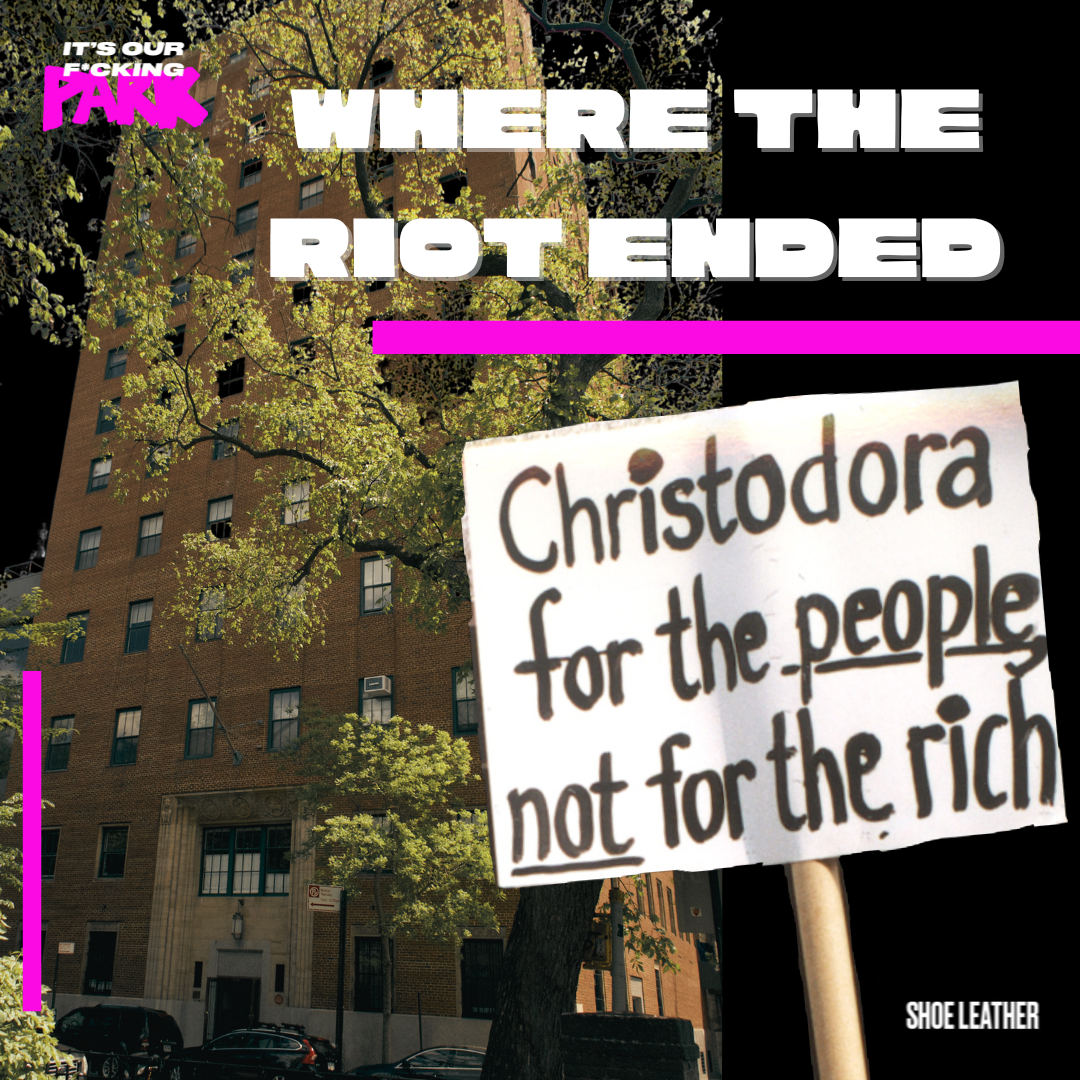By Salina Arredondo and Mansi Vithlani
On the night of August 6th, 1988 a police riot erupted in NYC’s Tompkins Square Park — the heartland of punk music, anarchy and activism in the Lower East Side.
The riot ended when protesters broke through the lobby of the Christodora House.
This episode covers how one building became the symbol of class warfare in the 80s.
TRANSCRIPT
SALINA: It’s the 1980s in Manhattan.
Archive (Unknown): These are the solid days of Wall Street. Times have been good and so has the money.
SALINA: Just a decade earlier, New York City was on the brink of bankruptcy.
SALINA: But now, Mayor Ed Koch has declared the fiscal crisis officially over.
Archive (Ed Koch Campaign Commercial 1981): The city is coming back.
MANSI: After years of decline, New York City is rapidly growing.
MANSI: Wall St is booming.
MANSI: And every corner of Manhattan seems to be changing. Except for one.
Tape (Clayton Patterson’s Archive): It’s our fucking park! It’s our fucking park! It’s our fucking park! It’s our fucking park!
SALINA: As other parts of the city get redeveloped, the Lower East Side resists.
Tape (WNYW): For the past 48 hours video has been surfacing like this sequence in which the police approach a demonstrator and begin first berating him then beating and chasing him. “Alright Alright i’m getting down! Give me a chance! I didn’t do anything! Give me a chance!
SALINA: 400 police officers clash with 200 protesters at Tompkins Square Park on the night of August 6th, 1988.
Tape (Clayton Patterson’s Archive): Somebody call an ambulance! Call an ambulance!
Tape (Clayton Patterson’s Archive):We don’t got no weapons!
Tape (Clayton Patterson’s Archive): We want the park! We want the park! We want the park! We want the park!
MANSI: It’s the squatters and the activists, versus, the police, who are trying to enact a curfew on Tompkins Square.
Tape (Ron Kuby): There were a lot of young artists and a lot of sort of punk style at the time, anarchists, some local community folk, a lot of homeless people, a lot of junkies, who were envisaging a new way of living and the police they just clubbed, and beat, and kicked, and smashed everybody.
SALINA: The police brutalize protesters and bystanders.
SALINA: And once video of that brutality gets out, the clashes are recognized as a police riot, one of the rare few in New York City history.
SALINA: That’s where most recollections of the Tompkins Square Park riot end.
SALINA: But it’s where our story begins.
Tape (Clayton Patterson’s Archive): Christodora! Christodora! Whistles blowing
SOUND OF WHISTLES BLOWING
Tape (Clayton Patterson’s Archive): Wake up! Wake Up! Wake up! Wake Up! Wake up! Wake Up!
MANSI: The last thing protesters do, is break through the lobby of the Christodora House — a luxury condominium right across the street from the park.
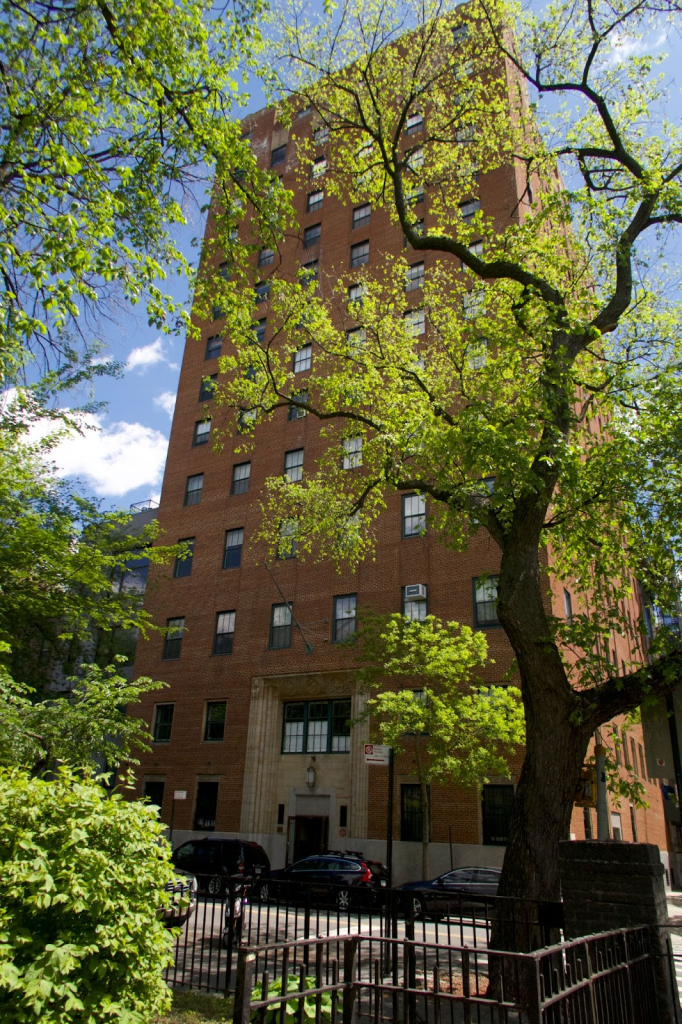
Tape (Kenny Toglia): People spontaneously went to the Christodora and smashed the front door in with a police barricade.
Tape (Glenn Schiller): It’s the only tall building in the neighborhood. This was the building that’s casting the shadow on the park.
SALINA: At the Christodora House, the riot ends.
SALINA: But there’s a reason it ends there.
SALINA: The Christodora was seen as the enemy of the Lower East Side.
MUSIC STARTS (SHOE LEATHER THEME MUSIC)
MANSI: But how did this building become the center of class warfare in the 80s?
MANSI: I’m Mansi Vithlani
SALINA: I’m Salina Arredondo
MANSI: You are listening to Shoe Leather, an investigative podcast that digs up stories from New York’s past, to find out how yesterday’s news affects us today.
MANSI: This season we go back to the summer of 1988, to the Tompkins Square Park Riot.
MANSI: This is season four: It’s Our Fucking Park.
MANSI: You’re listening to: Where the Riot Ended
MUSIC OUT
WHERE IT ALL STARTED: FROM SETTLEMENT HOUSE TO SQUATTER CITY
SALINA: We started this story to understand why?
SALINA: Why did protesters target the Christodora House?
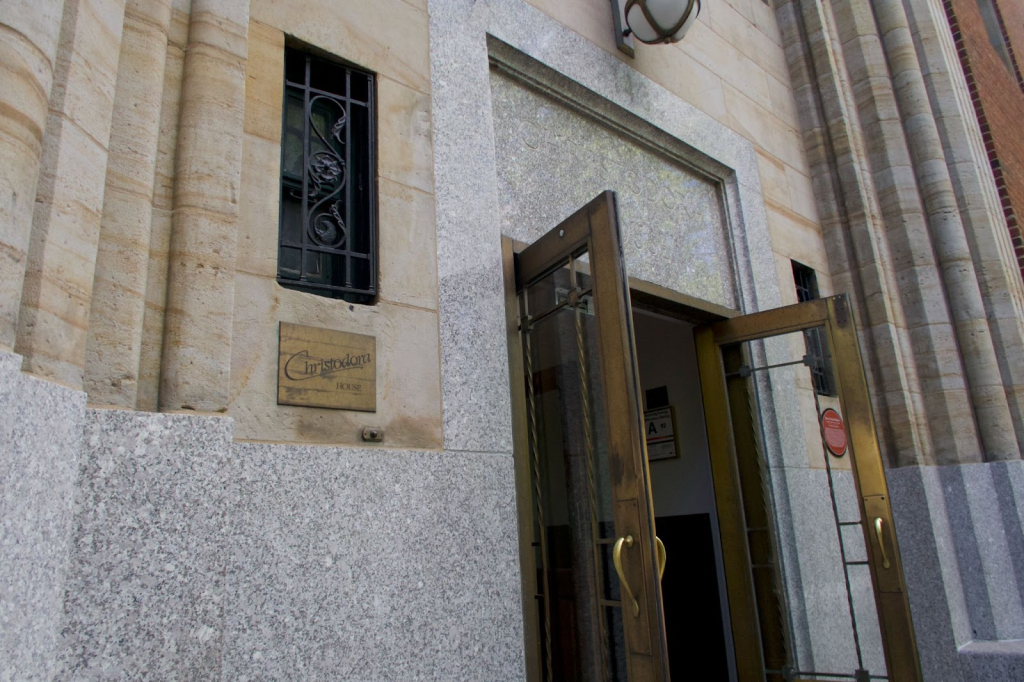
SALINA: They were chanting “Christodora,
Tape (Clayton Patterson’s Archive): Christodora! Christodora! Christodora! Christodora!
SALINA: And die yuppie scum,
Tape (Clayton Patterson’s Archive): die yuppie scum! die yuppie scum!
SALINA: But why this building?
Archive (Tompkins Square Park: Operation Class War on the Lower East Side): The Christodora building in the background which has been the scene of numerous clashes between residents and the neighborhood.
SALINA: Why not any other building?
SALINA: What we found was the Christodora has a long history in the Lower East Side.
MUSIC STARTS
SALINA: And a big part of the hostility against it came from the fact that it was built as a settlement house in 1928.
SALINA: A place to help people.

Tape Archive (A History of Settlement Houses): The settlements helped translate the vision of America into something newcomers could grasp. Settlements taught them English, new work skills, found housing for them and cared for their children.
SALINA: Even the name, Christodora, means gift of Christ.
SALINA: And it was built to be spectacular. 16 stories high. It had a pool, a gymnasium, classrooms, a theater and a concert hall. When it opened, it was actually the tallest settlement house in the world. And still today, it towers over all the buildings in the Lower East Side.
MUSIC OUT
SALINA: But, the group that built it eventually moved out in 1948.
SALINA: After that, the building eventually became abandoned. It would sit empty for 15 years. But it would never lose its reputation, as an emblem of social justice.
SOUND OF WALKING UPSTAIRS AND DOOR KNOCKING
MANSI: As we dug deeper, one name kept coming up. A man known as Jerry the Peddler.
MANSI: He didn’t have a phone and he wasn’t online. So, Salina and I just knocked on his door one evening.
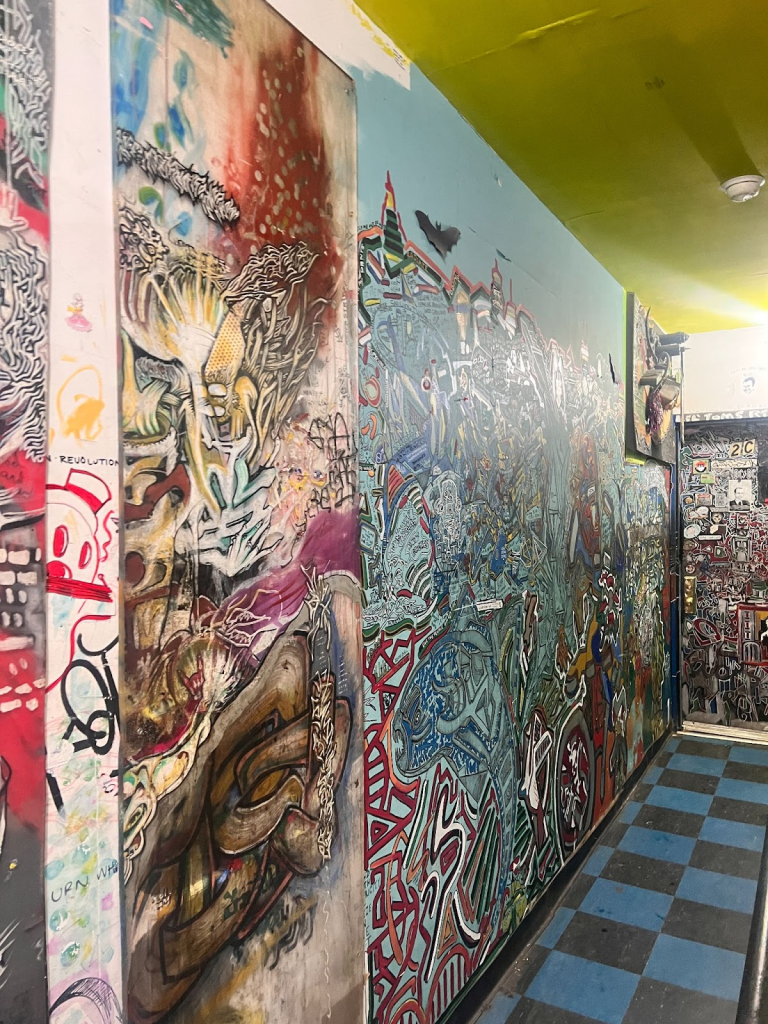
Tape (Jerry Wade Peddler): I’m missing jeopardy right now. Come on, it’s almost over.
MANSI: He’s busy watching Jeopardy on TV, but he let us in.
MANSI: Jerry is one the people who broke into the Christodora the night of the riot. He was a squatter in the Lower East Side at the time.
MANSI: He has a long white beard and his apartment is crammed with stacks of clutter.
Tape (Jerry Wade Peddler): I’m the world’s worst housekeeper. I’m not that kind of messy. I’m just a slob.
MANSI: He walks us in, sits on his yellow stained mattress and crosses his legs.
MANSI: Then he tells us about the years leading up to the riot.
Tape (Jerry Wade Peddler): And you either did very well under Ronald Reagan or you did very badly. We had hundreds of people sleeping in our parks and under our bridges and in piss stinking doorways. Okay. Because by this time, there were dozens of empty buildings.

MANSI: Jerry says there were dozens of empty buildings. But there were more than dozens.
MANSI: There were roughly 400 abandoned buildings or empty lots in the Lower East Side by the early 80s.
MANSI: The landlords had walked away when the city almost went bankrupt in the 70s.
MANSI: So people started squatting instead, and these squatters took over the Lower East Side.
Archive (WNEW-TV 1984): Within the space of a few short blocks here relative affluence mingles with abject poverty. By day the homeless frequent parks and roam the streets. By night they take up residence in buildings you would swear were empty.
MANSI: But Jerry says life was good.
Tape (Jerry Wade Peddler): By the time that we started squatting we’re parading all over the neighborhood and telling people ‘Yo, Peace!’ and ‘Let’s get these buildings together!’ and ‘Let’s create some Gardens!’ Puttin’ flowers in our hair and we’re dressing up as fruits and flowers and vegetables.
MANSI: Except, it didn’t last.
Tape (Jerry Wade Peddler): and by the end of the decade, we’re standing shoulder-to-shoulder in front of bonfires in the night facing off against legions of cops.
MANSI: And, what changed?
MANSI: Well, the money coming into the Lower East Side.
THE CHRISTODORA TURNS INTO LUXURY CONDOS
SALINA: All that barren land the squatters called home, caught the eye of developers.
SALINA: And the squatters, they just wanted to be left alone.
SALINA: But Manhattan was in the middle of a property boom.
MUSIC STARTS
Archive (WABC): Discover Manhattan, the most fantastic island in the world.
MUSIC OUT
SALINA: All that destruction and decay from the 70s, it was being bought, fixed and sold for astronomical prices.
SALINA: And that’s exactly what happened to the Christodora.
Tape (Sam Glasser): When we arrived the inside had just been completely trashed. I mean, there was graffiti everywhere. It was just a mess.
SALINA: We got in touch with Sam Glasser. He and a partner bought the Christodora House and redeveloped it into luxury condos. He lives in Missouri now.
Tape (Sam Glasser): The demolition and the removal of all this crap, you know, the building, it was screwed beyond belief.
SALINA: At this point, we knew Glasser – and other developers like him – were made out to be the bad guys. The ones who came in and ruined an era of squatting and affordable housing in the Lower East Side.
SALINA: We wanted to know what he thought of it all.
Tape (Salina Arredondo): Why do you think the Christodora was the target?
Tape (Sam Glasser): There was, there was nothing like it in the area. They were targeting it for their wrath and ire and anger for the same reason that I targeted it. Okay, it stands out. And it’s one of a kind, it is absolutely souI generous. I mean, there’s 16, 17 stories, this magnificent building, all by itself. Look at the door. Look at the money in there. Who the people buying apartments for $300,000. Wow, they’re evil. So if you’re gonna go after anything that represents money or anything like that Of course, you would choose Christodora House.
SALINA: And he was still upset talking about it, all these years later.
Tape (Sam Glasser): You know, when the neighborhood reverses direction, dramatically there’s always that group, I mean, that we’ll just hate because they weren’t making any money from themselves, or they adhere to a totally different value system than others did. Knock it down. You know,I mean, are you kidding, like, you’re throwing people out of their apartment, nobody was throwing anybody out of any apartment. That I was aware of.
SALINA: Nobody was throwing anybody out of any apartment, he said.
SALINA: That’s true. The Christodora wasn’t being occupied. But once it was turned into luxury condos, the people who moved in, they would ignite the class war in the Lower East Side.
THE YUPPIES MOVE IN
Archive: (Yuppie News Report): It has been quite a time for the yuppie the young upwardly mobile professional. Welcome to that new age they call themselves yuppies. ‘We’re going for the six figure. That’s all we want’.
MANSI: The 80s was a time of wealth and excess.
MUSIC STARTS
MANSI: A decade that inspired Madonna’s 1984 classic “Material Girl.”
Tape (Madonna – Material World): Cause we’re living in a material world…
MANSI: And the 1987 movie “Wall St,” with that famous line –
Tape (Wall Street 1987): Greed, for lack of a better word, is good. Greed is right, greed works.
MANSI: It was a time of extreme prosperity alongside extreme poverty.
MUSIC OUT
MANSI: And the Christodora was the pinnacle of that.
MANSI: It officially reopened as luxury condos in 1986.
Tape (Sidney Davidson): There’s no question that the people in the Christodora had more money than everybody else in the East Village.
MANSI: Sidney Davidson moved into the Christodora House three years before the Tompkins Square Riot.
MANSI: And Victoria Irwin…., she moved in 2 years before.
Tape (Victoria Irwin): It was my little slice of heaven on earth. That was the best apartment I’ve ever lived.
MANSI: Victoria lives in Seattle now. But in ‘86, she was a reporter. She paid $125,000 for a condo in the Christodora.
MANSI: Sidney was a banker. He bought *two condos on the 6th floor, but never got around to combining them. Both were ivy league graduates, young and affluent.
MANSI: They liked the spirit of the Lower East Side.
Tape (Sidney Davidson): It was an interesting neighborhood, unique opportunity, great value, and I was drawn to that.
Tape (Victoria Irwin): It was this very microcosm of, you know, a real mix of people.
MANSI: But they felt the animosity from the rest of the neighborhood.
MANSI: The squatters called them “yuppie scum.”
MUSIC STARTS
Tape (Sidney Davidson): The Christodora was an abandoned building. We did not displace anybody.
Tape (Victoria Irwin): I’m not saying I wasn’t yuppie scum, because I was a white, you know, upper middle class person living in New York at that time. I mean, I knew what I was doing. Everyone in the building was white. But you also just sort of felt like most of people were, young adults trying to, you know, make their way in the city. And, they didn’t want, want aspersions cast on them.
Tape (Sidney Davidson): You know we were customers of local businesses. The shirts I wore, had to be laundered and ironed. Did anybody speak of the cleaner, Kim? He was Korean. He would do dry cleaning and wash. And he took care of that and there was a number of us who used Kim. So he had a thriving business because of the number of working white collar people at the Christodora. We assured that the community didn’t fall into more of you know, littering and drug use.
MANSI: The people of the Christodora House – felt they had a right to be there.
MANSI: The squatters – saw it differently.
MUSIC OUT
THE BUILD UP TO THE RIOT: YUPPIES VS SQUATTERS
SOUND OF BIRDS IN PARK
Tape (Kenny Toglia): There was a lot of anger and resentment out there.
SALINA: That’s Kenny Toglia. A squatter.

Tape (Kenny Toglia): The Christodora building is really the crown of the whole area and it was built for poor people. And ultimately, it’s been turned over to the ultra rich.
Tape (Jerry Wade Peddler): the Christodora building had become the symbol of gentrification on the Lower East Side, okay.
SALINA: That’s Jerry again.
Tape (Jerry Wade Peddler): All these millionaires in the heart of our neighborhood, it always felt like they were just rubbing it in our face. We rubbed it right back.
SALINA: Squatters and activists started taunting the Christodora House and the people who lived there.
SALINA: Like Bill Di Paola, an activist.
SALINA: He and his friends used to draw twigs and take turns vandalizing the Christodora.
Tape (Bill Di Paola): So then this guy grabs twigs, and he breaks the twigs in all different pieces. And when you pull the twig out, which everybody did, if you got the shortest twig, you had to do something to the Christodora, either throw paint at it or something. That was a typical night.
MANSI: Victoria and Sidney weren’t amused.
Tape (Victoria Irwin): At nighttime, it was the Wild West.
Tape (Sidney Davidson): Tompkins Square Park, it was an open, open market for drugs, crack cocaine, marijuana, heroin.
MANSI: Community members started to complain. In the months before the riot, there was a rise in noise and nuisance reports.
MANSI: It’s unclear if any of the complaints came from Christodora residents or not.
MANSI: Either way, tensions got out of control, fast.
MUSIC STARTS
MANSI: Two months before the riot, the Lower East Side’s local community board voted to enact a 1 a.m. curfew on the park, hoping it would restore law and order.
Tape (Jerry Wade Peddler): The city had gone around to every entrance in the park. And in big letters like this they wrote ‘the park closes at midnight’.
SALINA: Jerry remembered seeing the signs go up.
SALINA: So squatters started posting their own.
SALINA: “Christodora for the people, not the rich,” and “Take our homes, we’ll take the streets”, they said.
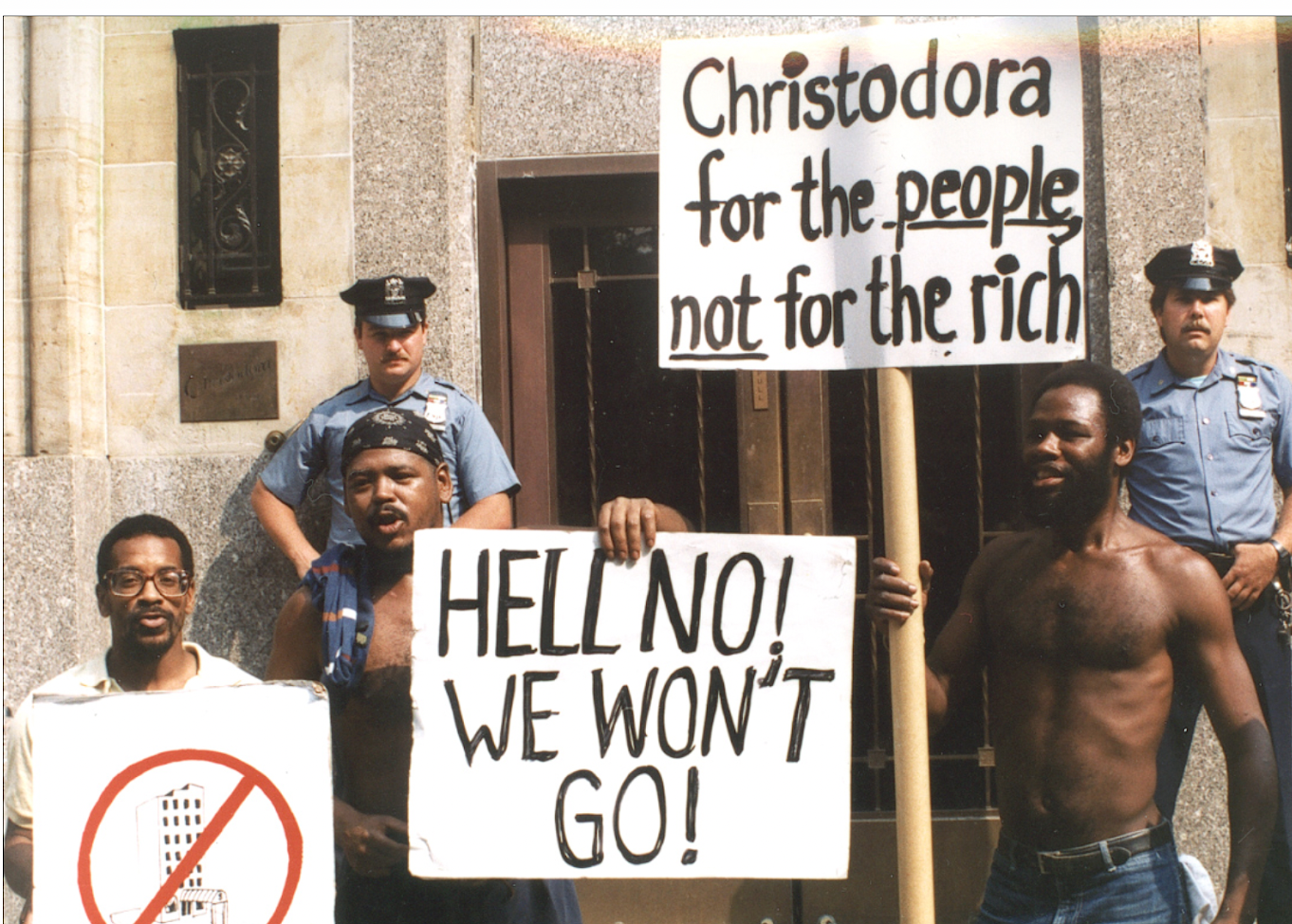
SALINA: Cops started regulating the park at night.
SALINA: Six days before the riot, Jerry and his friend Paul DeRienzo were walking by Tompkins Square when Jerry picked a fight with police.
Tape (Jerry Wade Peddler): I come walking into the park with a case of beer in my hands. I grabbed one, everybody started grabbing beers. I got these four cops five feet behind me. I got a crowd of people five feet in front of me.
Tape (Paul DeRienzo): And Jerry, drunk as a skunk….
SALINA: That’s Paul.
MUSIC OUT
Tape (Paul DeRienzo): Comes walking over to the cops and he starts making trouble and he goes ‘fuck you, fuck you, you can’t close this park’ I’ll never forget the cops saying, ‘I ain’t going to arrest you this time Jerry’. And Jerry says ….
Tape (Jerry The Peddler): I take my beer and I start shaking it like this going ‘pigs out of the park pigs out of the park’. And as soon as I got the whole crowd to chanting, I took this beer that I’d shaken up. Opened it turned around his spray down the cops with it. The crowd went crazy.
Tape (Paul DeRienzo): And then the cop looks at him and goes ‘you’re under arrest’ and they jump Jerry and take him away.
Tape (Jerry The Peddler): Four of us went to jail. Got out Monday morning. Saturday night we called for another demonstration.
SALINA: That Saturday demonstration? That would be August 6th 1988. The night of the Tompkins Square Park riot.
THE RIOT
Tape (Jerry The Peddler): You could feel the tension between us and the cops all week long. Yeah, we’d be walking down the street and they’d be like ‘looking for you Saturday night’. We had made made fools out of them.
MANSI: Jerry was still giddy from shaking the can of beer all over the cops, when Saturday night rolled around.
MANSI: By 11:30 p.m. – roughly 150 protesters were at the park.
MANSI: 100 police officers were there too, some on horseback.
Tape (Kenny Toglia): And urm you know, the crowd, it was like a, you know, a monster that kept reforming itself and coming back together, and splitting up.
MANSI: That’s Kenny again, a squatter.
MANSI: And here’s Jerry.
MUSIC STARTS
Tape (Jerry Wade Peddler): We were always ‘stay out of our way, you get in our way, we’ll get in your face’. We’d rather not but we we will. We’d rather just sit down smoke a joint all get along. But if you want to fight, we can fight.
MANSI: The police were there to enforce the curfew.
MANSI: But it was more than that.
SOUND OF WHISTLES, LARGE CROWDS, PROTESTORS
Archive (Clayton Patterson Archive): The park belongs to the people, The park belongs to the people, The park belongs to the people, The park belongs to the people….
Tape (Kenny Toglia): People were chanting “whose fucking Park, our fucking Park”. There was a lot of repressed anger. The street people, they’ve been treated as subhuman for most of their lives. It was really about pushing the poor people out of the the inner cities.
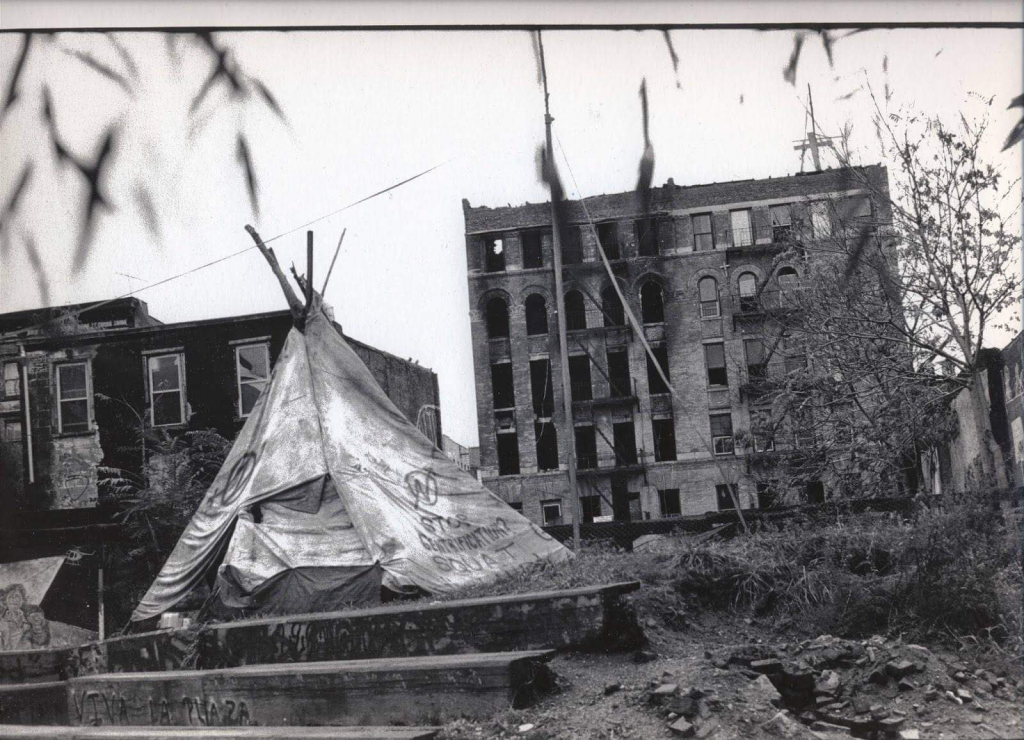
SALINA: By midnight, some people were throwing firecrackers.
SALINA: Others were holding a big banner saying “Gentrification is class war. Fight back.”
SALINA: 12:30 a.m. – protesters began marching. They blocked traffic.
SALINA: around 12:45 a.m., the riot started
Archive (Paul De Rienzo): Here come the police. They’re now coming across the street. They’re coming across the street, they have their clubs out. They’re attacking the crowd.
SALINA: Someone threw bottles at the cops.
SALINA: That’s when the police got violent.
Tape (Jerry Wade Peddler): And the cops are going crazy. The squatters, the anarchist, the demonstrators, most of us were experienced enough, not to get hit. The people who got hit were people that were coming out of the bars and ‘going urm excuse me what’s going on?’ Yeah, hundreds of crazy cops rampaging up and down the street beating their neighbors.
MUSIC OUT
Tape (Kenny Toglia): It was way out of control. The police, they just went crazy and started beating everybody in sight. A lot of them weren’t from the 9, 9th precinct.
SALINA: The local police captain had called for backup.
SALINA: But he didn’t just make a standard call. He also sent out a code “10-85” – which is a citywide police call for assistance.
SALINA: By 1 a.m, 400 cops were at Tompkins Square Park, many of them from all over Manhattan and Brooklyn.
Tape (Sidney Davidson): I definitely was, was not outside. As I recall, there was tear gas.
MANSI: We asked Sidney and Victoria what they remembered.
Tape (Victoria Irwin): It was just clear that Tompkins Square Park was was just full of piss and vinegar energy. And it wasn’t a surprise, let’s put it that way. I hate to say this I was slightly amused.
MANSI: Shortly after 1 a.m., a police helicopter was called in.
Archive (Paul De Rienzo): Helicopters now passing over Eighth Street, hovering about 75 feet directly above the crowd. It’s our fucking park, it’s our fucking park, it’s our fucking park!
Tape (Jerry Wade Peddler): You have people getting beaten bloody and it’s not us.
MANSI: Jerry was running and dodging the cops. Until one officer *PAUSE* caught up to him.
Tape (Jerry Wade Peddler): This is the only time I got hit that night. He kicks me right square in the back and yells ‘whose fucking Park’? And as I’m pouring down to my knees, I’m like ‘our fucking park’.
MANSI: The fighting went on till sunrise.
MANSI: Then, cops dispersed at 6 am.
Tape (Jerry Wade Peddler): One minute we’re fighting the cops and the next minute is six o’clock and the cops think okay, it’s all over everybody go home. You can go back into park *laughs* what? *laughs* And they did, they just turned around and walked away. *laughs* Countless bodies laying everywhere. bloodstain, sidewalks and a whole nine yards and we’re like, wow.
MANSI: Jerry explained what happened next.
MUSIC STARTS
Tape (Jerry Wade Peddler): We go into the park and there wasn’t anything else to do. We had like, picked on the Christodora building almost from the time it opened. And we went into the Christodora building and we just trashed the lobby. We took a potted tree out of the lobby and into the park, tore all the light fixtures out of the wall, you know it’s just basic trashing.
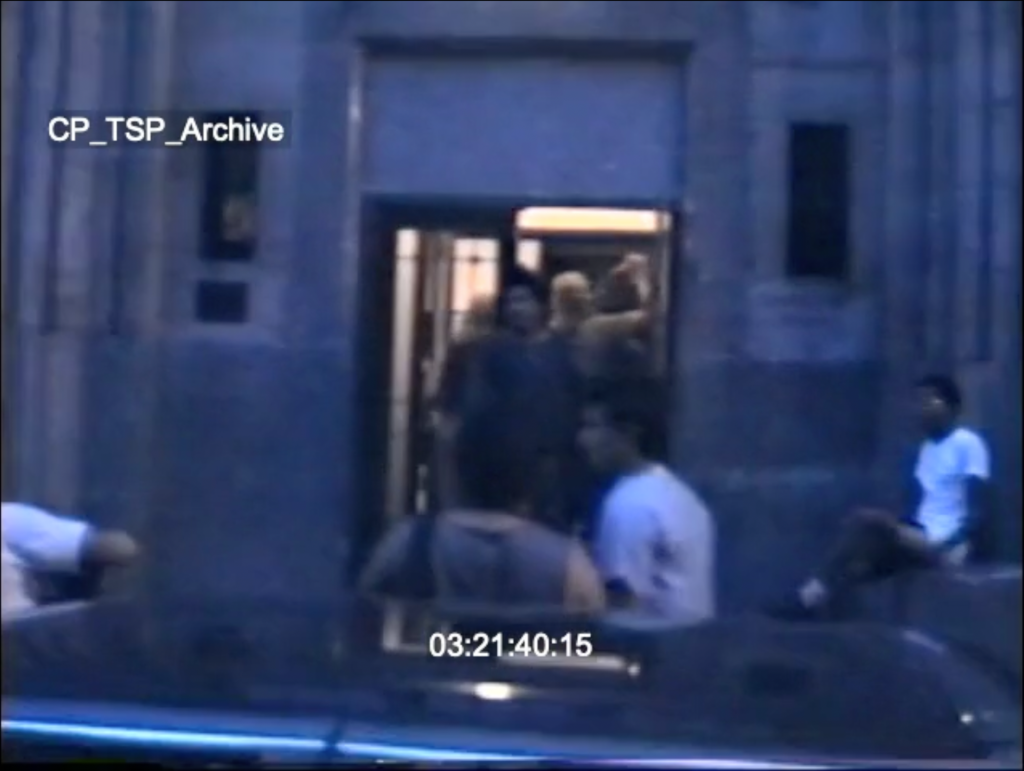

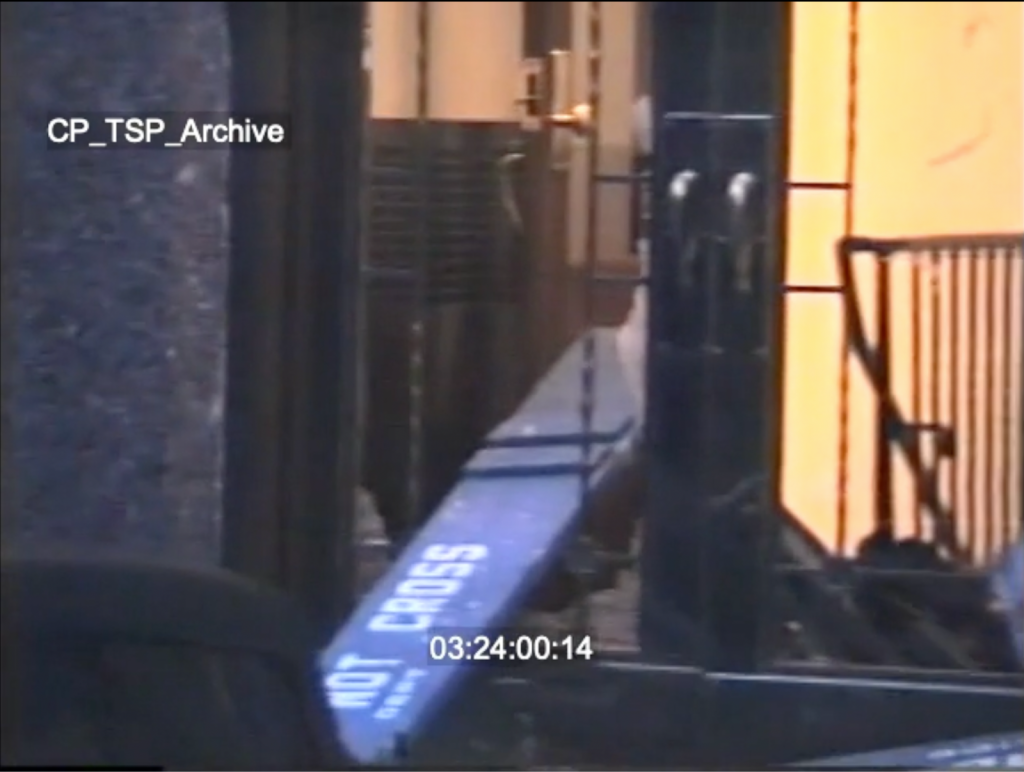
MANSI: Kenny was there too.
Tape (Kenny Toglia): it was one of those things where it was the spontaneous mind of the crowd itself, that just drew everywhere, like everyone spontaneously just knew. // Let’s go to the Christodora. That’s usually how they goes.
MANSI: Once that was over, so was the riot.
MUSIC OUT
Tape (Kenny Toglia): I was standing on the street and this woman who was standing next to me was so moved by the whole thing, that she just grabbed me and kissed me. *laughs*
Tape (Mansi Vithlani): Just out of nowhere?
Tape (Kenny Toglia): Just out of nowhere. Yeah, that really summarizes the whole night for me, or symbolizes it or whatever you will.
WHAT HAPPENED TO THE LOWER EAST SIDE?
SALINA: We started this story to understand why.
SALINA: Why was the Christodora House hated in the Lower East Side?
SALINA: We spoke to 20 people, went to the Christodora, dug through hundreds of archival documents, and watched hours of footage from the 80s.
SALINA: At some point along the way, flipping through old photos of punk rock street kids in Tompkins Square park, or standing in Jerry’s chaotic apartment, we understood.
Tape (Jerry Wade Peddler): See, underneath all the rubble strewn lots and the dead junkies, the cops, there was a real neighborhood.
Tape (Kenny Toglia): It was one of these places that you could really come and really relax and feel free.
MANSI: There were nearly one thousand people squatting in the Lower East Side in the 80s.
MANSI: From that movement, grew a mecca of punk music, art, and activism.
MANSI: It was a tiny escape from the glow and greed of the time.
SALINA: It was a neighborhood that challenged the idea of urban spaces and what an urban community could be.
SALINA: And the Christodora House wasn’t the enemy.
SALINA: But, it was a good target.
MUSIC STARTS
SALINA: Six cops were indicted for brutality
SALINA: And after August 6th, the park was eventually closed for a year. (91-92)
SALINA: By the time it reopened, the Lower East Side had changed. Its era of counterculture was over.
MANSI: But some of the squatters *did go legit. The city offered them payment plans to take ownership of their buildings as co-ops.
MANSI: And the Christodora? We’ve started calling her Chrissy.

MANSI: She still towers over the Lower East Side.
MUSIC OUT
SALINA: But, if you want a room in the once-skyscraper settlement house, it could cost you upwards of a million dollars.
SALINA: A latte across the street, that will run you ten bucks.
SALINA: And, don’t even try to get a restaurant reservation around there on the weekend.
MANSI: Trust us, we’ve tried.
CREDITS
MUSIC STARTS (SHOE LEATHER THEME MUSIC)
SALINA: Shoe Leather is a production of the Columbia Graduate School of Journalism. This episode was reported, written and produced by me Salina Arredondo…
MANSI: and me Mansi Vithlani.
MANSI: Joanne Faryon is our executive producer and professor. Rachel Quester and Peter Leonard are our co-professors. Special thanks to Columbia Digital Libraries, Professor Dale Maharidge, Ron Kuby, Clayton Patterson and Paul DeRienzo.
SALINA: Shoe Leather’s theme music – ‘Squeegees’ – is by Ben Lewis, Doron Zounes and Camille Miller, remixed by Peter Leonard.
MANSI: Other Music by Blue dot sessions. Our Season four graphic was created by Lina Fansa and Ghiya Haidar.
MUSIC OUT

